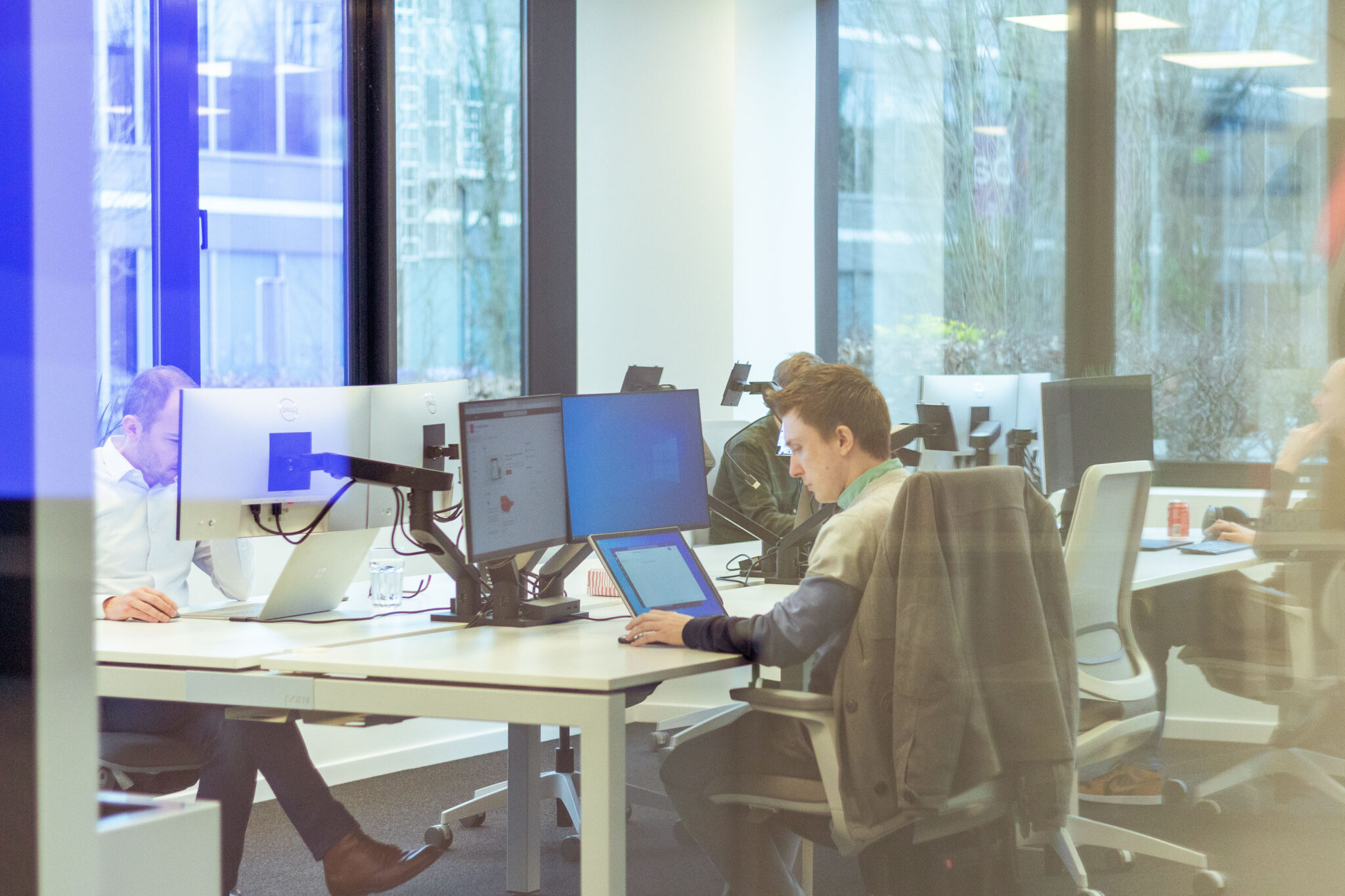“Cloud-native applications have set in motion an irreversible evolution.”
22.10Many companies claim to be cloud-native, whereas in reality, they’re simply moving files and data to the cloud. Ergo, they’re not really cloud-native, instead they’re using lift and shift. But what is being cloud-native all about then? We had a chat with Kim Fertinel and Sam Steen, managing partners at CloudFuel and Noest respectively, about their core business.
With CloudFuel, you’re offering a “cloud-native” experience. What exactly do you mean by that?
Sam: “Simply put, applications that are born in the cloud. If a customer asks us to develop a custom app today, and we are given carte blanche, we will always propose a cloud-native application. That enables us to fall back on the available platform services. In a Platform-as-a-Service (PaaS) environment, we use Microsoft’s services to build cloud-native applications.”
Kim: “We really want to focus on that digital transformation. Developing cloud-native applications and redesigning and/or enhancing existing applications towards cloud.”
Why are you so determined?
Kim: “Working with everything in the cloud is just so much faster than working in a traditional manner, both in terms of delivery and adoption. Also, we can code anything.”
Sam: “Ten years ago, if you wanted to build an application, you first had to set up a server and an application server before you could really start working. Now we can just skip those steps. We can start coding and writing the app straightaway. In addition, it has become nearly impossible to compete with parties like Microsoft when it comes to secure infrastructure. There’s no use losing time trying.”
Does having the certainty of working with a party like Microsoft mean cloud-native applications are safer?
Sam: “Definitely. Microsoft’s cloud is secured by hundreds, if not thousands of people, as well as by an enormous software arsenal. That’s nearly impossible for an individual company to match.”
Kim: “In a way, that certainty is a big help to us. But don’t get me wrong, the risk to develop an incredibly unsafe application remains. That’s why platform knowledge is crucial. We want to bring that know-how and expertise to our customers: we know the platform and we know how to develop and configure it in order to deliver a safe, high-performance product. The certainty resides in the fact that we can build applications with components developed by partners with extremely high levels of security and management.”
“That’s the added value we want to offer with CloudFuel. We have plenty of customers who have in-house development teams. But they don’t necessarily have the knowledge required to safely and efficiently deal with that platform.”
Are there any disadvantages or things that can go wrong?
Sam: “Connectivity is definitely one of them. That’s still the most critical factor.”
Kim: “The speed of new developments emerging is another one. You could say that that’s actually a positive thing, but it implies that you continuously have to train your people.”
“The big plus to cloud-native is having the application run on several components. If one of those components breaks down, you isolate it and you spin up another one. That way, everything keeps running and the end user doesn’t notice a thing. By splitting up components that way, you can greatly reduce the risk of breakdowns.”
Is it your job to point out to clients how important digital transformation and application modernization are?
Kim: “For starters, look at the huge shortage of human resources the IT industry is facing nowadays. That can mostly be attributed to the fact that many companies are lagging behind digitally. If you want to attract the right talent, you need transition, which you can’t achieve by continuing to bank on traditional development.”
Sam: “That’s right, it’s not just about the technical side for companies anymore. If you’re looking to recruit collaborators who can help you build a digital future, you have to provide them with the latest technologies and techniques.”
Kim: “It’s also just a demand that originates on the business side of things. They expect constant innovation and new functionalities.”
What does the future hold for CloudFuel (in this regard)?
Kim: “Cloud-native is where our focus lies. We want to immerse ourselves in the subject and stay on top of new evolutions. Obviously, as a start-up, it’s all about growth. On the one hand, finding the right people and instructing them in the CloudFuel way of working; on the other hand, assisting our clients to modernize everything they can possibly modernize, and so future-proofing them.”
Sam: “Very many huge applications were built in the past. We’re now trying to deal with them bit by bit, by focusing on particular sections of an application and rewriting them or migrating them to the cloud. The big-bang scenarios aren’t exactly self-evident. It’s a bit like eating a giant pizza, you don’t eat it all at once either but one slice at a time.”
Has reading this interview left you fascinated? Are you curious to find out whether CloudFuel can help you determine a sophisticated cloud strategy or modernize your processes? Get in touch!





